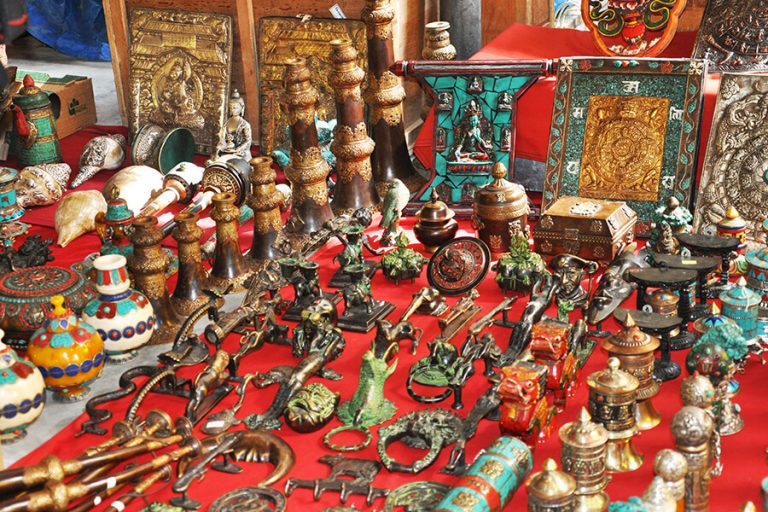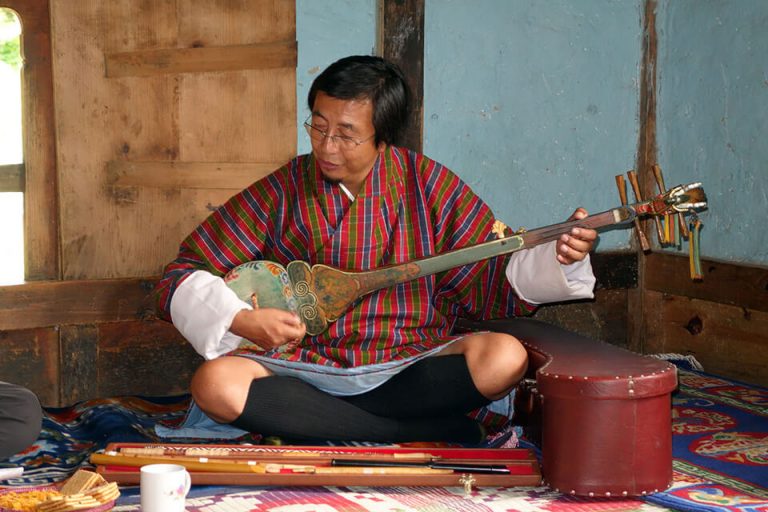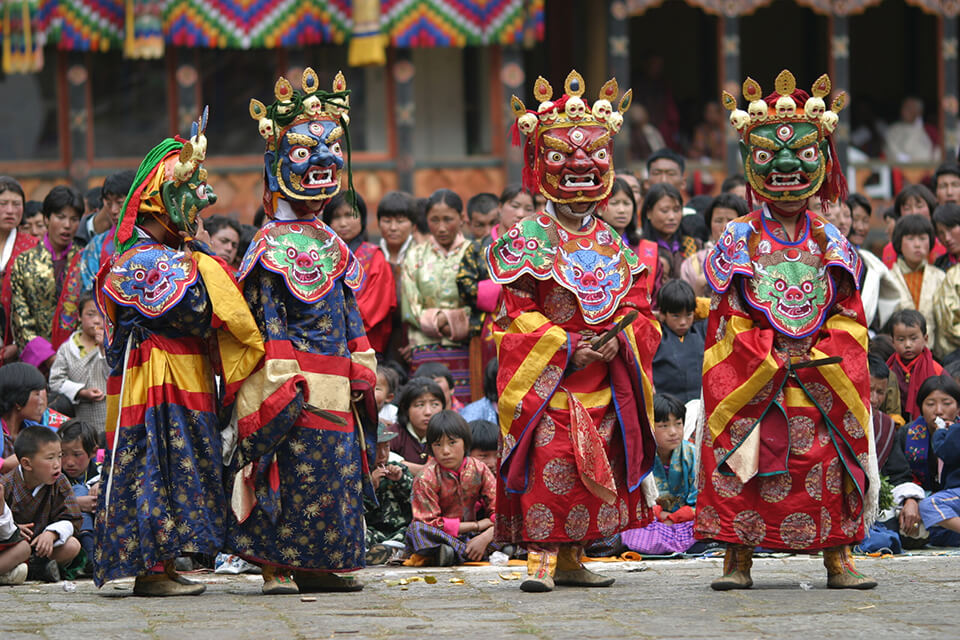
Dance is a universal language that transcends words, conveying emotions and preserving the richness of a country’s heritage. Bhutan, like many other nations, has its unique dance traditions, including the Cham dance, a series of masked dances that not only entertain but also express the profound culture and traditions of the Buddhist kingdom. To truly experience Bhutan’s vibrant and meaningful culture, it’s essential not to miss the opportunity to witness and engage with Bhutanese traditional dances. These dances are not just a form of entertainment; they are a window into the heart and soul of the country’s cultural identity. So, don’t hesitate any longer – explore the folk dances of this remarkable landlocked nation as a part of your perfect Bhutan vacation.
History of Bhutan Traditional Dances
The history of Royal Dances in Bhutan is characterized by their performance in the presence of the king and his family. These dances serve a dual purpose – they entertain the royal court while also carrying religious significance. Only accomplished dancers are allowed to perform in front of the king, and these performances entail weeks of rigorous practice. Following their presentations, the dancers receive recognition and awards from the king.
The tradition of court dances was introduced in Bhutan during the 17th century under the leadership of Zhabdrung Ngawang Namgyel. This tradition persisted and flourished, particularly during the reign of Jigme Dorji Wangchuck, the third king of Bhutan in the 20th century. King Jigme Dorji Wangchuck had a strong affinity for dances and songs, leading to frequent dance performances at the royal court. His enthusiasm for the art extended to his travels, where he would bring professional dancers to entertain him during his journeys.
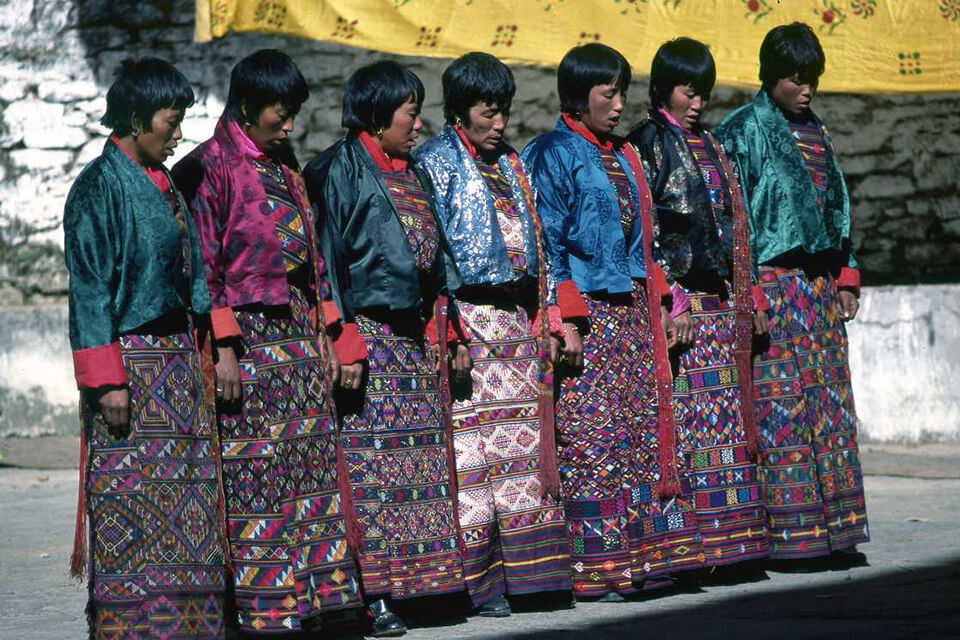
Types of Traditional Dance of Bhutan
Bhutan is known for its rich cultural heritage, and traditional dances play a significant role in expressing and preserving the country’s unique traditions. Here are some of the prominent Bhutanese traditional dances:
Joenpa Legso Dance (Welcome Dance)
This dance, as the name suggests, is a welcome dance performed at the beginning of events or special occasions. Both men and women partake in this dance, wearing their traditional attire. The dancers’ performance is captivating and receives appreciation from the audience.
Drametse Nga Cham Dance (Religious Mask Dance)
The Drametse Nga Cham, meaning “mask dance of the drums from Drametse,” originates from a small village in eastern Bhutan. This religious mask dance is a highlight of the Drametse Festival, performed by a group of 16 male dancers and 10 musicians. The dancers wear masks and colorful silk robes, while the musicians play instruments like trumpets, cymbals, and drums. Enjoying this vibrant performance is a truly exciting experience.

Pa Cham Dance (The Dance of Powas and Pams)
The Pa Cham dance is also known as the “Dance of Powas (heroes) and Pams (heroines).” Dancers wear colorful silk robes and crowns while carrying small cylindrical hand drums. This dance is a ritual honoring Guru Rinpoche during Tshechus.
Zhungdra Dance (The Oldest Bhutanese Dance)
The Zhungdra dance is considered one of the oldest in Bhutan, with its origins tracing back to early Buddhist saints. It is performed in various settings, including courtrooms, dzongs, and monasteries. Female dancers wear traditional attire and rachu (hand-woven craft). The dance is regarded as an offering to the gods.
Boedra Dance
The Boedra dance is typically performed in courtrooms and involves a group of men and women standing in a circle. Sometimes, men and women may perform separately. Unlike many other dances, the Boedra dance does not follow a strict order of steps but is instead in harmony with the rhythm of the song being performed. This element of surprise adds to the dance’s appeal. Originally, Boedra was primarily a song performance, and the dance steps were introduced later.
These traditional dances are not only a source of entertainment but also a significant part of Bhutan’s cultural heritage, reflecting the country’s unique customs and spiritual practices.
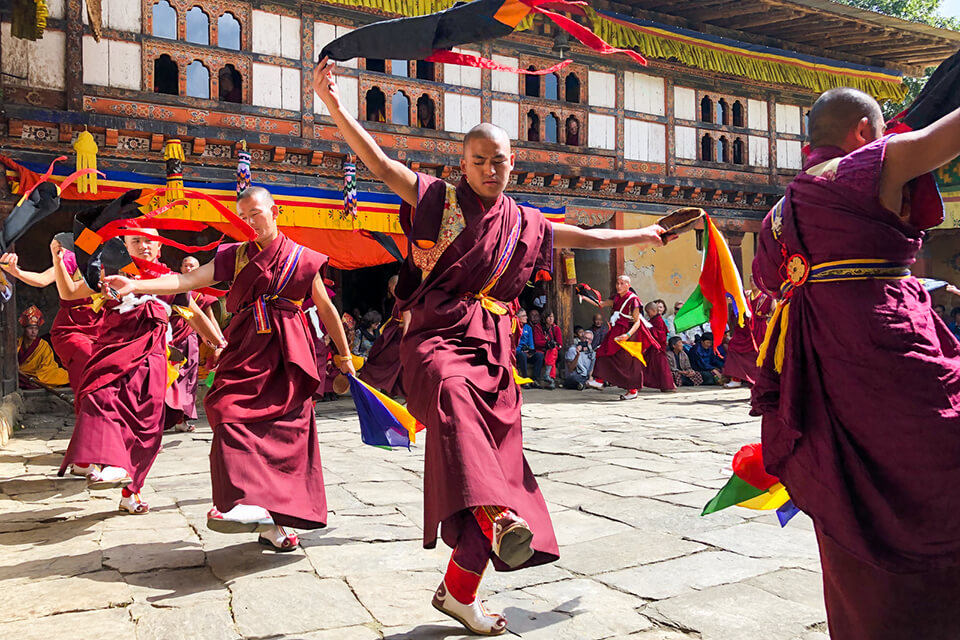
5 Other Famous Bhutan Dances
Bhutan’s diverse cultural tapestry includes a wide range of traditional dances that reflect the unique customs and practices of different regions and communities. Here are five other famous Bhutanese traditional dances:
Layab Dance (Traditional Dance of Nomadic People)
This dance is performed by the Bhutanese nomadic herders who inhabit the high-altitude regions of western Bhutan. These nomads, who do not have a permanent settlement, rely on yak rearing as a primary source of livelihood.

Yak Cham Dance (Traditional Dance of Eastern Nomadic People)
Another dance associated with nomadic people, the Yak Cham Dance is performed by those living in the eastern regions of Bhutan. This dance is a tribute to the local deity, Aum Jomo (Goddess), and it reflects the cultural richness of the eastern nomadic communities.
Doyab Dance (Dance from Southern Bhutan)
The Doyab Dance has its origins in the village of Dorokha, situated in the Samtse district of southern Bhutan. It is recognized as one of the oldest traditional dances in Bhutan. The local inhabitants of this valley, known as Dorokhapa, are among the country’s oldest residents.
Ashang Gaway Dance
The Ashang Gaway Dance is reserved for special occasions and is considered one of the oldest traditional dances in Bhutan. It holds cultural and historical significance, reflecting Bhutan’s rich heritage.
Tashi Tashi Dance (Farewell Dance)
The Tashi Tashi Dance is typically performed to mark the end of a performance or event. It serves as a farewell dance and invites everyone to join in, bringing a sense of unity and closure to the occasion.

These traditional dances highlight the diversity of Bhutan’s cultural traditions and regional variations, showcasing the unique way of life and customs of different communities within the country.

